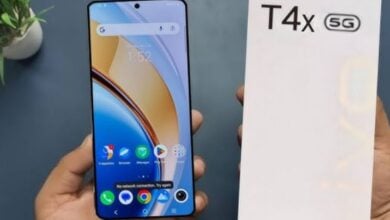Raw Power vs Smart Efficiency: Comparing Snapdragon 8 Gen 3 and Dimensity 9300

Snapdragon 8 Gen 3 vs Dimensity 9300: The Android flagship space has been witnessing a fierce showdown between MediaTek’s Dimensity 9300 and Qualcomm’s Snapdragon 8 Gen 3. Both chipsets promise to break the limits of mobile performance, but which chipset leads the pack? Let us take a closer look at the two silicon behemoths.
CPU Architecture: Varied Strategies to Fuel
Snapdragon 8 Gen 3 adheres to the conventional CPU cluster design with a combination of performance and efficiency cores. It is a 1+5+2 layout with one high-speed Cortex-X4 core, five Cortex-A720 performance cores, and two Cortex-A520 efficiency cores. Dimensity 9300 takes a more aggressive path by eschewing efficiency cores. It employs four Cortex-X4 cores and four Cortex-A720 cores, with high speed for everything. This design gives Dimensity 9300 raw power in burst-oriented applications, but can affect efficiency on light loads.
GPU and Gaming Performance: Adreno vs Immortalis
Snapdragon 8 Gen 3 comes with the latest Adreno GPU, which performed incredibly in actual gaming. It has hardware ray tracing and delivers improved performance even in graphics-heavy games. Dimensity 9300 comes with the Immortalis-G720 GPU, which supports ray tracing and high frames as well. Benchmarks indicate Snapdragon as the winner regarding frame stability and long-term performance with heavy gaming over many hours.
AI and NPU Capabilities: Who’s Smarter?
Artificial intelligence is an overarching idea in 2025, and every one of the chipsets features strong NPUs. Snapdragon 8 Gen 3’s Hexagon NPU is optimized for on-device generative AI as well as LLM-based workloads, like real-time translation, as well as improved photography. Dimensity 9300 is close behind with comparable on-device AI support as well as improved camera processing. But Qualcomm’s partnership with Google and other platforms provides it with an advantage in real-world use of AI.
Thermals and Power Efficiency: Balance Issues
With its integration of efficiency cores and a 4nm node of TSMC, the Snapdragon 8 Gen 3 has a superior performance-to-power ratio. The phones based on this chip have cooler temperatures and better battery life in standard usage. The Dimensity 9300, despite being as powerful as it is, is hotter during heavy loading because of its all-performance-core design, so thermal throttling is more common during demanding gaming or multitasking sessions.
Connectivity and Features: Flagship Standbys
Both processors provide best-of-breed connectivity with in-chip 5G modems, Wi-Fi 7, and Bluetooth 5.4. The Snapdragon 8 Gen 3 also sports Snapdragon Seamless and Snapdragon Sound technologies to boost cross-device processes and audio. MediaTek responds with AI-enabled connectivity features, but Qualcomm’s ecosystem is still more refined and stable for premium users.
Verdict: Snapdragon Reigns Supreme
Dimensity 9300, though a great step forward for MediaTek, excels in some burst performance areas, but Snapdragon 8 Gen 3 provides a better-rounded solution. It integrates performance, efficiency, thermals, and real-world usability better. Gamers, heavy users, and AI-intensive applications are left to discover the safer 2025 flagship chipset.





